Posted by Jane Metters LaBarbara.
October 23rd, 2017

Blog post by Stewart Plein, Rare Book Librarian

Lt. Louis Bennett, Jr. and his dog standing in front of a SE5a biplane
This year, 2017, marks the 100th anniversary of America’s entry into World War I. While war had raged in Europe since 1914, President Woodrow Wilson was making every effort to keep America from committing soldiers and joining the war effort. However, the tide turned in support of the war and America joined forces with Europe in April 1917. Following that declaration, the U.S. then declared war on Austria-Hungary in December with troops arriving on the Western Front the following year, 1918.
A young man from Weston, Louis Bennet, Jr., couldn’t wait. Bennett was the son of Louis Bennett Sr., a prominent Lewis County politician, and Sallie Maxwell Bennett. Born September 22, 1894, Bennett attended preparatory schools in Pennsylvania, then enrolled at Yale in 1913, graduating in 1917.
While at Yale, Bennett began to envisage a West Virginia Flying Corps. He left Yale briefly to return to West Virginia in order to put his idea for a flying corps into practice. Once back in his home state, Bennett pursued his dream, fully developing a flying corps and situating it in Beech Bottom, a small town in Brooke County near Weirton. Bennett established the corps with a full complement of pilots, crew and its own airfield. With the attention of the governor, Bennett received a commission as the unit’s captain. Read the rest of this entry »
Posted in West Virginia Collection | 4 Comments »
Posted by Jane Metters LaBarbara.
October 16th, 2017
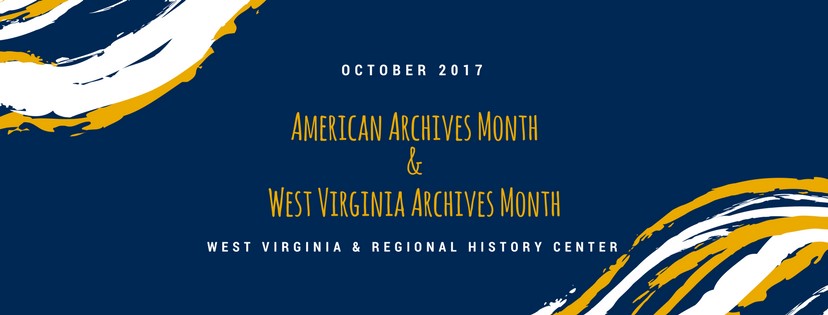
Blog post compiled by Jessica Eichlin, Photographs Manager and Preservationist
October is American Archives Month and West Virginia Archives Month! To celebrate, this post will look at some staff “favorites” from the collections at the WVRHC.
Adventures of Huckleberry Finn
My favorite book that we have at the West Virginia and Regional History Center is found in the rare book room. It is an 1885 printing of Adventures of Huckleberry Finn by Mark Twain. It is one of my favorite books of all time, and Twain is my favorite author so it was really neat to see one of the first printings of the book.
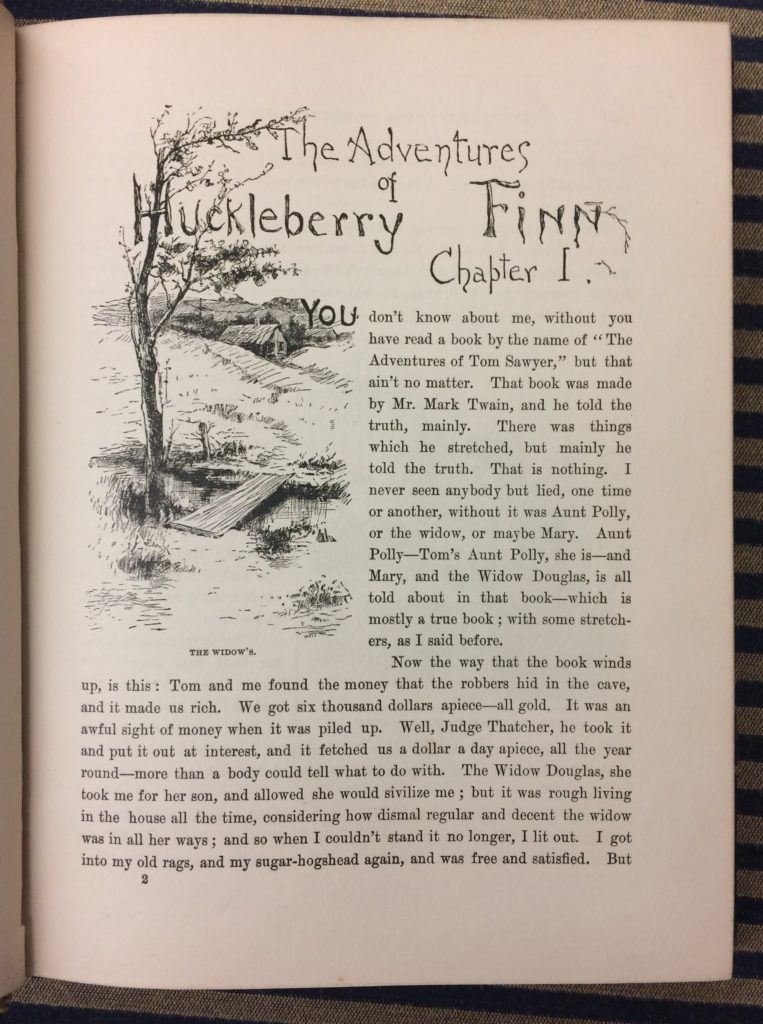
Submitted by Savannah Rose, Graduate Assistant Read the rest of this entry »
Posted in West Virginia Collection | No Comments »
Posted by Jane Metters LaBarbara.
October 4th, 2017
Blog post by Jane Metters LaBarbara, Assistant Curator, WVRHC; online exhibit by Savannah Rose, Graduate Assistant.
In celebration of WVU’s 150th anniversary, the WVRHC unveiled a new exhibit, Flowing Outward and Beyond: West Virginia University, on West Virginia Day. The exhibit showcases WVU history through records and artifacts found in the Center’s collections, featuring WVU’s early days, student life, arts, sports, and more.
For those who cannot visit us in person, one of the WVRHC’s fantastic graduate assistants has created a digital exhibit that brings the story of the objects, text, and videos we have on display to a wider audience. We encourage you to check it out at https://wvuhistoryexhibit.wordpress.com/.
When I worked on my first exhibit at the Center, I saw how much effort and creativity my coworkers put into our yearly exhibits, and I wanted to be able to share the finished product with people far and wide (including my family members living over 1000 miles away). Now, we have PDF versions of our previous 5 exhibits available, which you can find on our WV Day Exhibits webpage: https://wvday.lib.wvu.edu/exhibits. Savannah tried something new this year, going beyond PDF slides to a web-based design. I hope you all enjoy the upgrade as much as I do!
If this year’s digital exhibit whets your appetite, the exhibit can still be viewed in person at the WVRHC (in the back of the 6th floor, Downtown Campus Library); it will remain on display through May 2018.
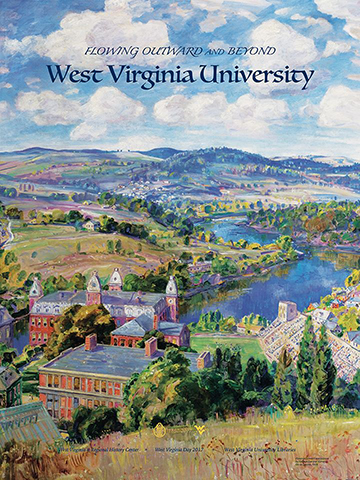
This year’s commemorative poster was a beautiful painting, and is one of my favorites!
Posted in West Virginia Collection | No Comments »
Posted by Jane Metters LaBarbara.
September 26th, 2017
Blog post by Stewart Plein, Rare Book Librarian
The great West Virginia coal magnate, William Henry Edwards, was a butterfly lover at heart. Edwards lived in Coalburg, a small town outside Charleston, and he is credited as the first to open the Southern Coalfields. When coal shipments were threatened by the events of the Civil War, Edwards found a way to get his coal to market, shipping it by boat. He was the first to ship coal for export to the North by water. He was also the first to document the life cycle of butterflies throughout North America and his three volume set of books on butterflies is still considered to be the reigning masterwork on the subject. Read the rest of this entry »
Tags: Rare Books
Posted in West Virginia Collection | No Comments »
Posted by Monte Maxwell.
September 21st, 2017
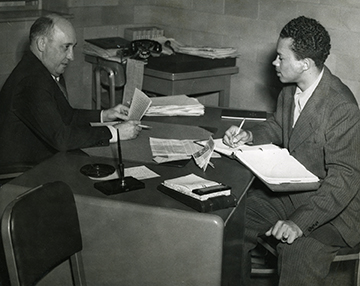
Jack Hodge, WVU’s first African-American graduate (Journalism, 1954) interviewing Thomas Fulton, head of Social Work Department, for The Daily Athenaeum.
The West Virginia University Libraries’ West Virginia & Regional History Center will host a discussion on preserving the history of WVU’s first African-American graduates on October 3 at 4 p.m. in the WVRHC in the Downtown Campus Library.
WVRHC Curator and Assistant Director Lori Hostuttler will highlight the archival materials documenting graduates Jack Hodge (first bachelor degree, 1954), Annette Chandler Broome (first female bachelor’s degree, 1957), Victorine Louistall Monroe (first master’s degree) and John Reuben Sheeler (first PhD.) who are part of the current exhibit Flowing Outward and Beyond: WVU 1867-2017.
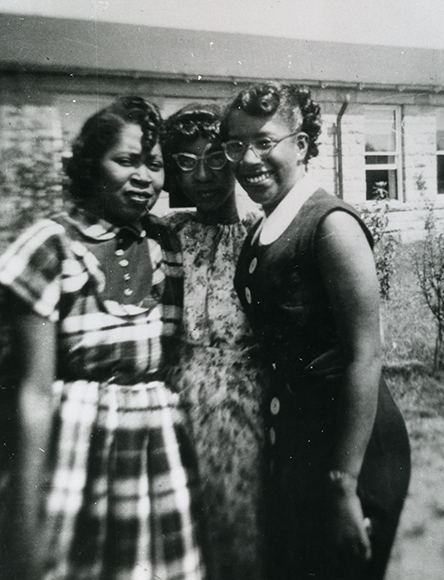
In 1957, Annette Broome (on the right) became the first known African-American woman to receive an undergraduate degree from WVU. She was the granddaughter of John Hunt. (L to R: Ruth Barnett, Lennie Wiley and Annette Chandler Broome)
Read the rest of this entry »
Posted in Announcements, Events and Exhibits, West Virginia Collection | No Comments »
Posted by Monte Maxwell.
September 19th, 2017
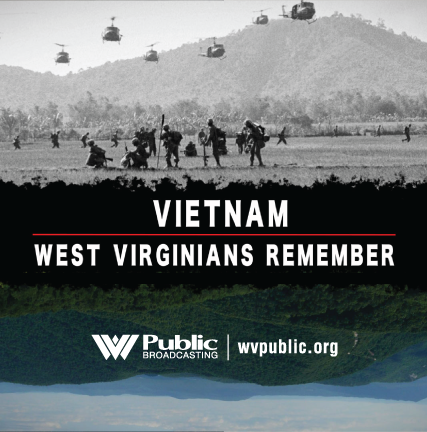
West Virginia University Libraries invites the campus community and the public to a screening and panel discussion of the West Virginia Public Broadcasting documentary “Vietnam: West Virginians Remember” at the Mountainlair’s Gluck Theatre on September 27 at 4 p.m. The Libraries welcomes all interested attendees and hopes many student veterans and campus veteran advocates will join us for this program.
A panel discussion will follow the film and feature WVPB Executive Producer Suzanne Higgins and WVU Associate Professor of History James Siekmeier. WVU Reed College of Media Shott Chair of Journalism and Assistant Professor Lois Raimondo will moderate the discussion.
Read the rest of this entry »
Posted in Announcements, West Virginia Collection | No Comments »
Posted by Jane Metters LaBarbara.
September 18th, 2017
Blog post by Jane Metters LaBarbara, Assistant Curator, WVRHC
We recently received a collection of letters and other papers of George W. and Fred W. Marshall, two brothers who served and died in World War I. Their collection is a good example of how archivists process smaller collections, and the mysteries that we work with every day.

Clipping from a special issue of the Waynesburg Republican commemorating deceased soldiers from Greene County, PA
Their story is a sad one. Both teachers before joining the military, they were the only sons in their family. They both died in combat in France in the summer of 1918, within three weeks of each other. Read the rest of this entry »
Posted in West Virginia Collection | 1 Comment »
Posted by Jane Metters LaBarbara.
September 12th, 2017
By Elizabeth Satterfield, undergraduate student at WVU
In junior high and high school, I remember research days. As students, we loved research days! We left the classroom, went to the computer lab, and often became distracted once we began researching. Today, I still feel the same way about research. I love learning something new, discovering a forgotten detail, and connecting the dots.
This summer, I had the opportunity to conduct research on the Sunnyside neighborhood under the direction of Jenny Boulware in the history department as a part of the Summer Undergraduate Research Experience (SURE). Although known in recent memory as a student rental neighborhood and popular party location, prior to the mid-twentieth century, Sunnyside was home to immigrants and multi-generational families, skilled and unskilled workers, professors and students. In the last thirty years, however, student housing demands have significantly altered Sunnyside’s historic building stock. Although every property has not been affected, it is important to record the history of the neighborhood and its residents before little is left to record. Read the rest of this entry »
Posted in West Virginia Collection | 2 Comments »
Posted by Jane Metters LaBarbara.
August 28th, 2017
Blog post by Stewart Plein, Rare Book Librarian
Throughout the history of the written word, whether it be a handwritten manuscript or the printed text, the reader’s need to mark a passage was always in demand. Before bookmarks, before post it notes, there was the manicule. Latin in origin, the root word manus, stands for “hand” and the word manicula for “little hand” or fist. Hence the word manicule represents a small hand, usually drawn with a finger pointing to the desired text.

Read the rest of this entry »
Posted in West Virginia Collection | No Comments »
Posted by Jane Metters LaBarbara.
August 21st, 2017

Blog post by Stewart Plein, Rare Book Librarian
As the old saying goes, ‘there’s nothing new under the sun,” and that holds true for West Virginia as newspapers reported on the solar eclipse over the years.
The Weston Democrat reported on March 22, 1875, that an eclipse would be occurring in April, announcing “The Eclipse of the Sun, Observations to be Made – The Information to be Gained.” The article stated that the eclipse “may mark an important era in all solar and stellar physics.”
Here’s the thrilling headline for The Clarksburg Daily Telegram, August 20, 1914, “Moon to Cut off Rays of the Sun!”
Martinsburg’s Pioneer Press, the first African American newspaper in West Virginia, ran this story on August 22, 1914, “War May Prevent Observations of the Total Eclipse of the Sun Tomorrow in Europe, Asia and Part of America.” Although the United States had yet to enter World War I at this time, the eclipse was seen as posing problems for military activities throughout its path.
If you’re not able to view the eclipse today, stop by the West Virginia and Regional History Center to look at Trouvelot’s Astronomical Drawings, read the blog post, “It’s Astronomical! The Biggest Book in the Rare Book Room,” here, https://news.lib.wvu.edu/2017/05/08/its-astronomical-the-biggest-book-in-the-rare-book-room/ or visit Chronicling America, http://chroniclingamerica.loc.gov/ , to read all about newspaper reporting of the eclipse in West Virginia history.
Resources:
Eclipse Image: The Atlantic: How Artists Have Depicted Eclipses Across History. https://www.theatlantic.com/science/archive/2016/09/an-artists-view-of-an-eclipse/498548/ Etienne Trouvelot, Lithograph in colour, Total eclipse of sun; observed 29 July 1878
Trouvelot, Etienne. Trouvelot’s Astronomical Drawings, New York: Charles Scribner’s Sons, 1881.
Chronicling America:
Daily Telegram:
http://chroniclingamerica.loc.gov/lccn/sn85059715/1914-08-20/ed-1/seq-12/#date1=1789&index=0&rows=20&words=solar+Solar&searchType=basic&sequence=0&state=West+Virginia&date2=1924&proxtext=solar&y=13&x=12&dateFilterType=yearRange&page=1
Pioneer Press: http://chroniclingamerica.loc.gov/lccn/sn83025146/1914-08-22/ed-1/seq-1/#date1=1789&index=10&rows=20&words=solar&searchType=basic&sequence=0&state=West+Virginia&date2=1924&proxtext=solar&y=13&x=12&dateFilterType=yearRange&page=1
Posted in West Virginia Collection | No Comments »
Posted by Jane Metters LaBarbara.
August 21st, 2017
Blog post by Jane Metters LaBarbara, Assistant Curator, WVRHC
The WVRHC is more than a fantastic repository of the history and culture of West Virginia and the central Appalachian region—we are the Special Collections division of the WVU Libraries, so we also preserve selected materials beyond our state and regional scope. This is a story of some of those out-of-state materials—56 reels of 16mm motion picture film that have nothing to do with Appalachia.
I picked up these films from the Potomac State College library in 2014. The library director at the time told me that the films had been in the library since at least 1986, with no indication of where or who they had come from or whether they had a connection to Potomac State College. PSC librarians gave the films to the Center so we could try to identify them, preserve them, and make them accessible. Each film was housed in a plastic case, and some of those were carefully cataloged in a wooden box. The labels on the film cases indicated World War II subject matter, and those labels formed the foundation of the collection’s contents list, available online.
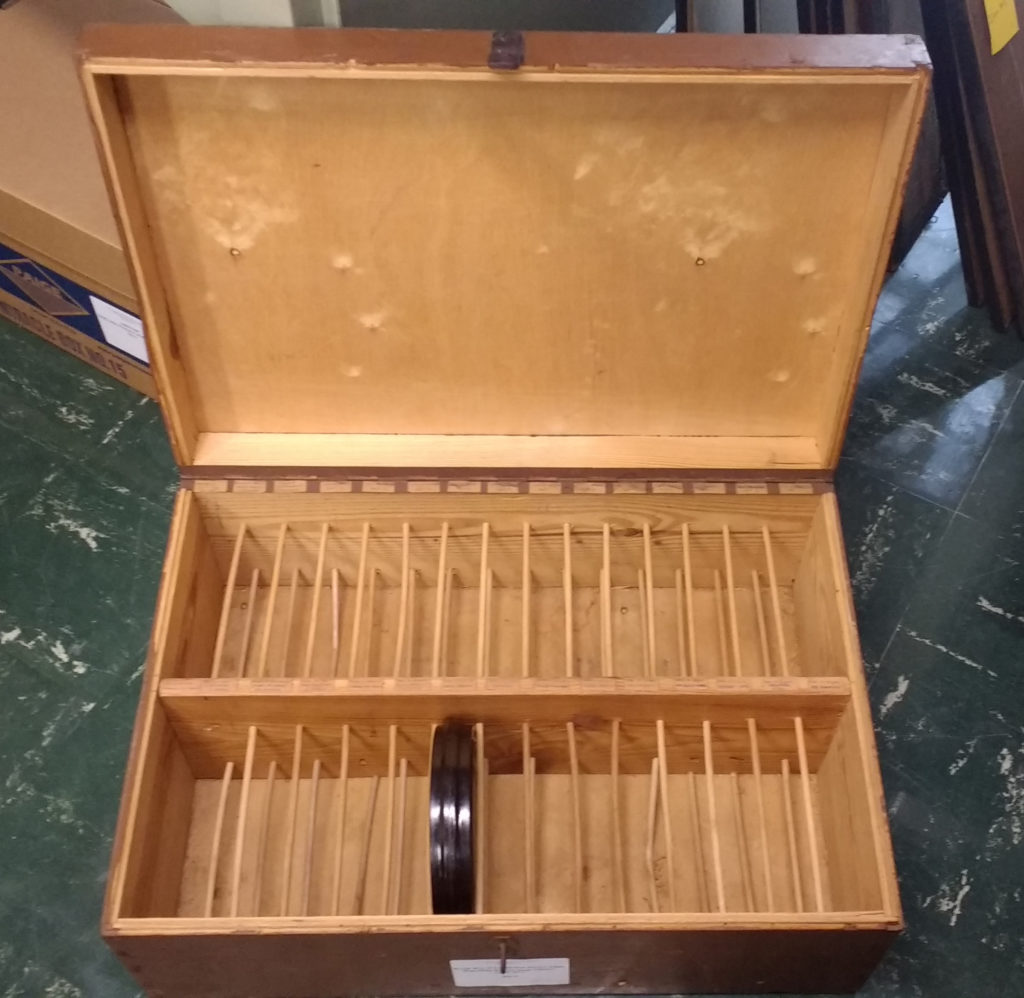
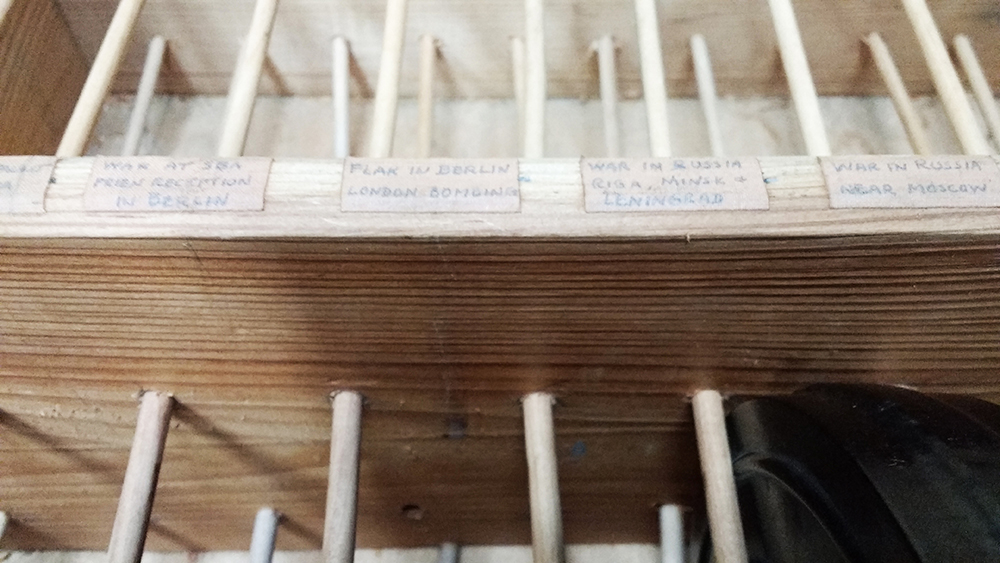
In the photo above, you can see the effort that a previous owner went to in order to keep the photos organized.
In addition to our lack of information about the creation of these films and how they got to Potomac State College, we faced a few other challenges with these films.
Read the rest of this entry »
Posted in West Virginia Collection | No Comments »
Posted by Jane Metters LaBarbara.
August 14th, 2017
Blog post by Lori Hostuttler, Assistant Director, WVRHC.
Spruce Knob is West Virginia’s highest point and one of my favorite places. Located in Pendleton County, the Knob, the summit of Spruce Mountain, stands 4,861 feet above sea level. The mountain takes its name from the growth of Red Spruce trees. At Spruce Knob, many of these trees grow one-sided or in a flag shape due to high winds.
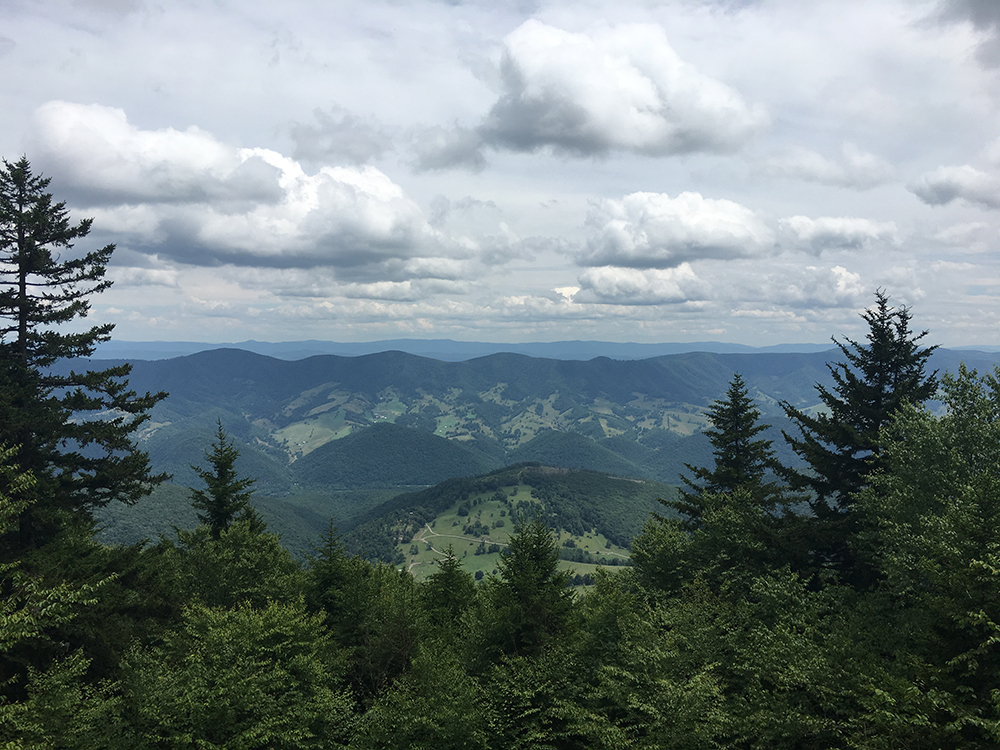
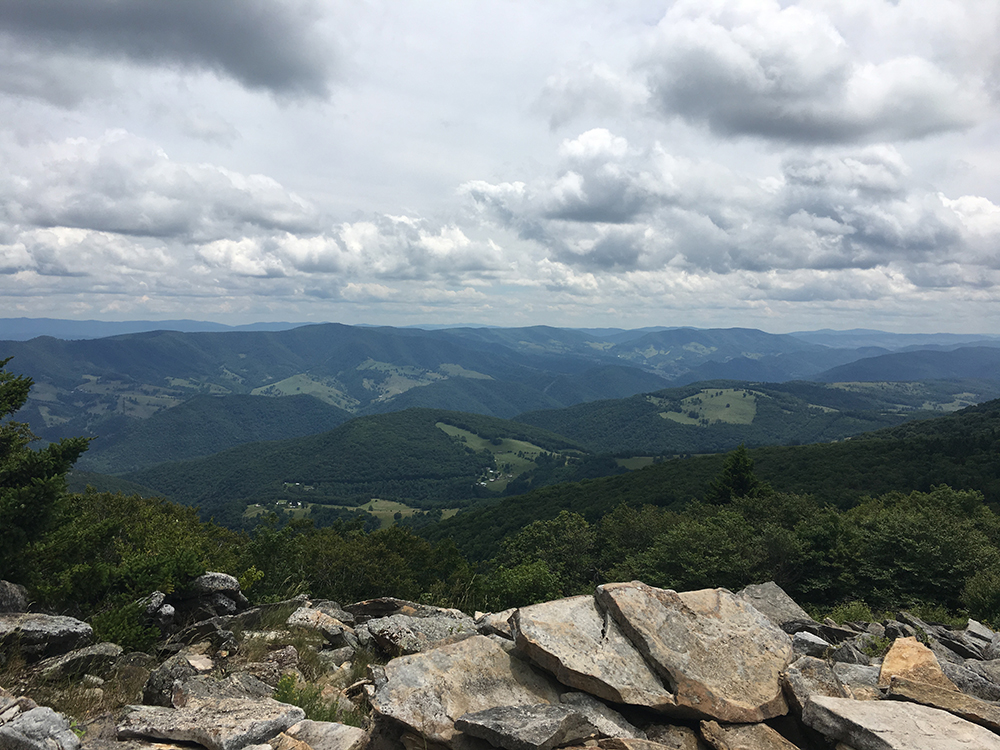
Scenic views from Spruce Knob, July 2017, photos by Lori Hostuttler. Read the rest of this entry »
Posted in West Virginia Collection | 1 Comment »
Posted by Monte Maxwell.
August 11th, 2017

The West Virginia University Libraries’ West Virginia & Regional History Center has received a $210,000 grant from the National Endowment for the Humanities to continue digitizing newspapers published in West Virginia from 1836 to 1922.
The award is the Libraries’ fourth NEH grant as part of the National Digital Newspaper Program. The collaboration between the NEH and the Library of Congress enlists libraries and institutions from around the country to create a digital database of historical United States newspapers.
“We are honored that the NEH recognizes the tremendous value of the historical newspapers archived in the WVRHC,” WVRHC Director John Cuthbert said. “We are thrilled to make more of these resources accessible to the world.
Read the rest of this entry »
Posted in Announcements, West Virginia Collection | No Comments »
Posted by Jane Metters LaBarbara.
July 31st, 2017
Blog post by Stewart Plein, Rare Book Librarian
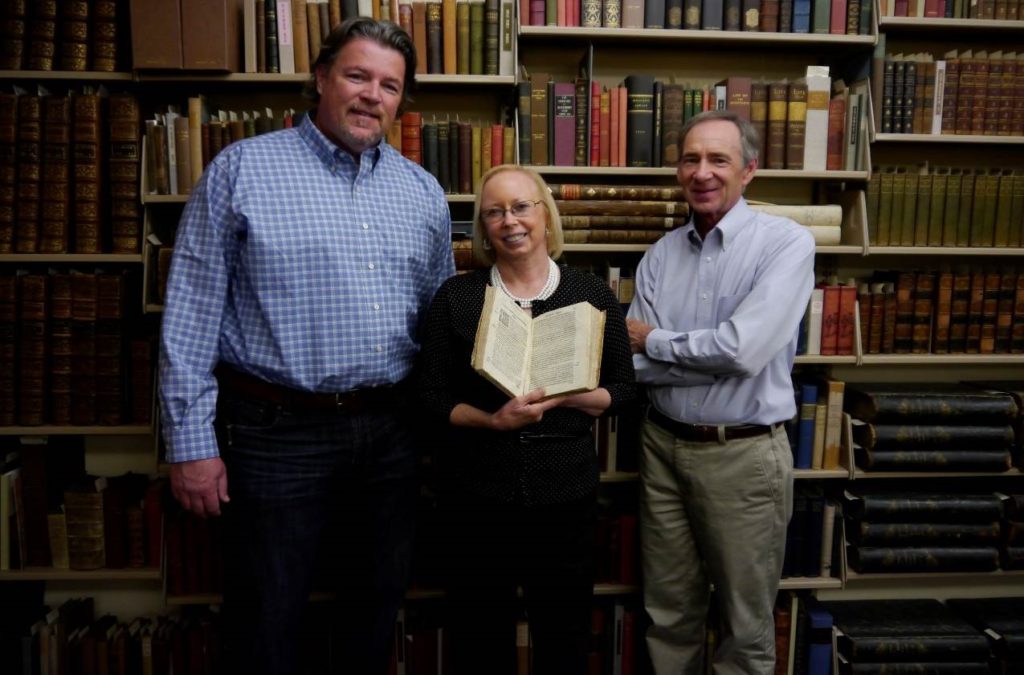
A seventeenth century book has found a new home in the WVU Rare Book Room. WVU alumnus, Mike Murphy, above left, with Stewart Plein, Rare Book Librarian, and John Cuthbert, Director of the West Virginia and Regional History Center, recently donated a religious text published in Seville, Spain by Ioannis (Juan) de Cardenas of the Society of Jesus, a Jesuit monastic order. Read the rest of this entry »
Tags: Rare Books
Posted in West Virginia Collection | No Comments »
Posted by Jane Metters LaBarbara.
July 24th, 2017
Blog post by Jane Metters LaBarbara, Assistant Curator, WVRHC
National Dance Day is celebrated on July 29th (the last Saturday in July), and is in its 8th year. While you check out this year’s dance routine, crafted by Dizzy Feet, you can think back on all the dancers who paved the way and all the dance options we have now, from the Argentine Tango to the YMCA. There are a lot of options for WVU students who want to dance, including through classes like PE 188 “Folk, Square, and Ballroom Dance”, the WVU Swing Dance Club, or a Zumba group class at the Student Rec Center. WVU even offers the first Dance Major degree (a BA in Dance) in the state of West Virginia! But we didn’t always have so many options—all great things have to start somewhere, and a part of the origin story of dance at WVU lies in a group called Orchesis.
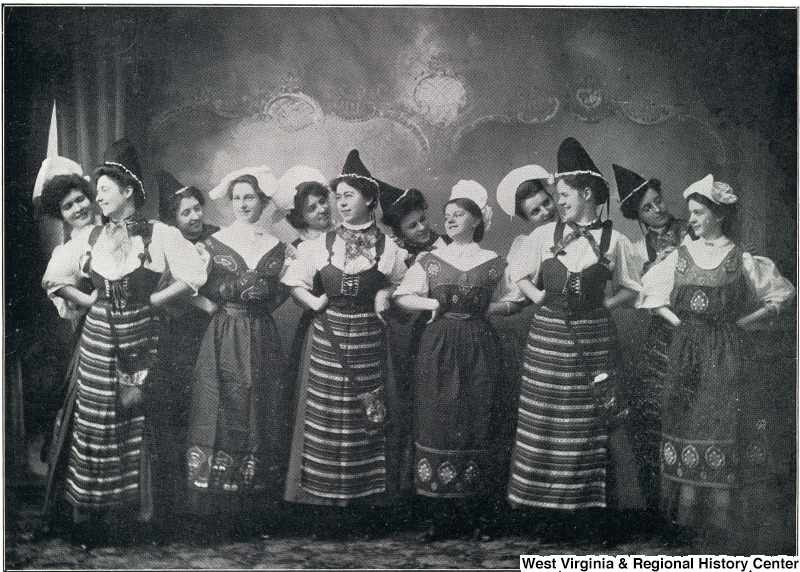
Folk Dancers in 1908—this is the earliest dated photo of dancers at WVU in our database.
Read the rest of this entry »
Posted in West Virginia Collection | No Comments »
Posted by Jane Metters LaBarbara.
July 10th, 2017
Blog post by Michael Ridderbusch, Associate Curator, WVRHC.
Recently, while processing our voluminous Harrison County Court records collection at the History Center, a record documenting one of western Virginia’s earliest pioneers was uncovered. Although a routine court record dating from 1809 regarding a financial transaction, it nonetheless includes the name of John Hacker (1743-1823), a pioneer who led the way into Virginia’s western frontier. According to the West Virginia Heritage Encyclopedia edited by Jim Comstock, “…he was the first permanent settler in what is now Lewis County.” Though he settled in the region that became Lewis County, this 1809 case fell under the jurisdiction of the Harrison County Court since Lewis County was established later in 1816, from the territory of Harrison County. The Encyclopedia further reveals that “in 1774 Hacker was given a 400-acre grant of land there, near what is now called Hacker’s Creek after him.” His notable exploits included serving in the Continental Army during the Revolutionary War, including service with George Rogers Clark in the Northwest Campaign of 1778-1779, and serving as a representative of Hacker’s Creek at the peace conference that concluded the Northwest Indian War of 1785-1795.
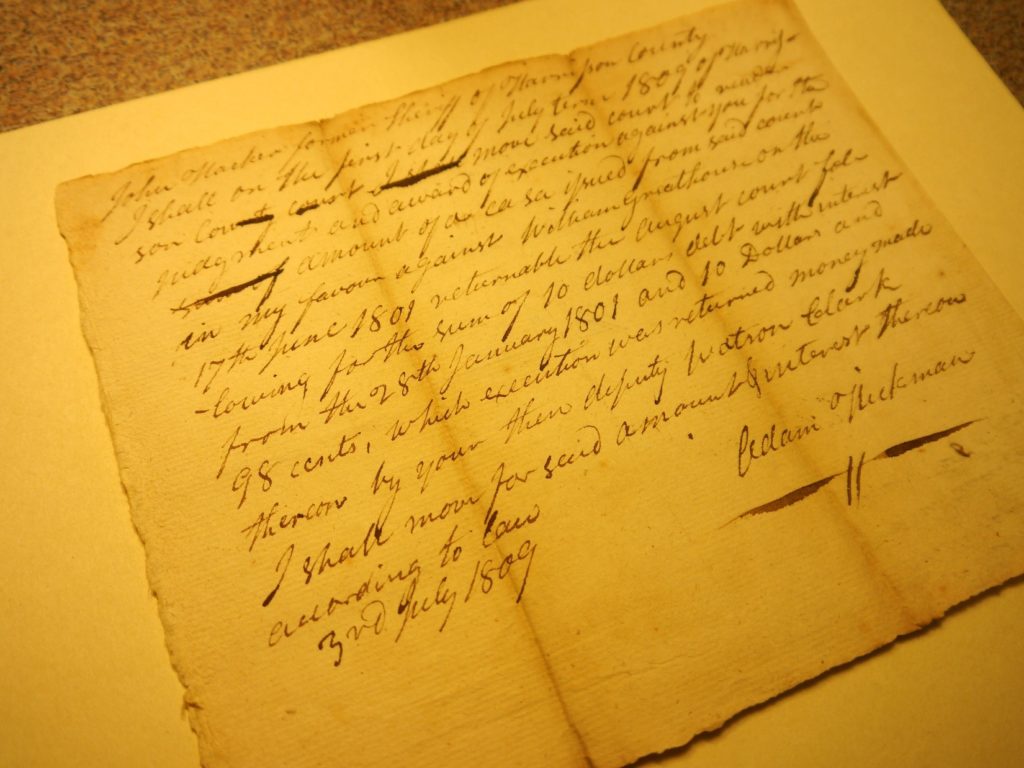
Harrison County Court Record involving John Hacker and Adam Hickman, 1809. Read the rest of this entry »
Posted in West Virginia Collection | 1 Comment »
Posted by Jane Metters LaBarbara.
July 3rd, 2017
Blog post by Stewart Plein, Rare Book Librarian
One thing is common to all Independence Day celebrations: the American flag. Cities and towns across the state of West Virginia have celebrated Independence Day with banners and flags of all sorts, sizes and styles. Here’s a look back at some high flying flag celebrations for the Fourth of July across the state and over the years.
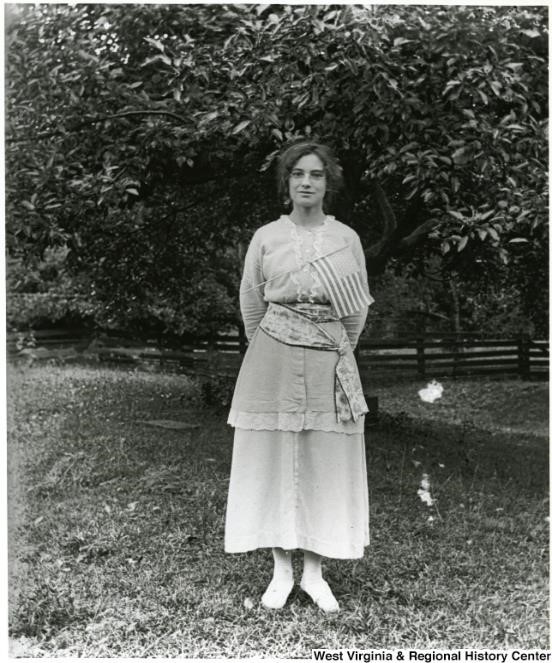
Young woman with a flag pinned to her dress, Helvetia, early twentieth century.
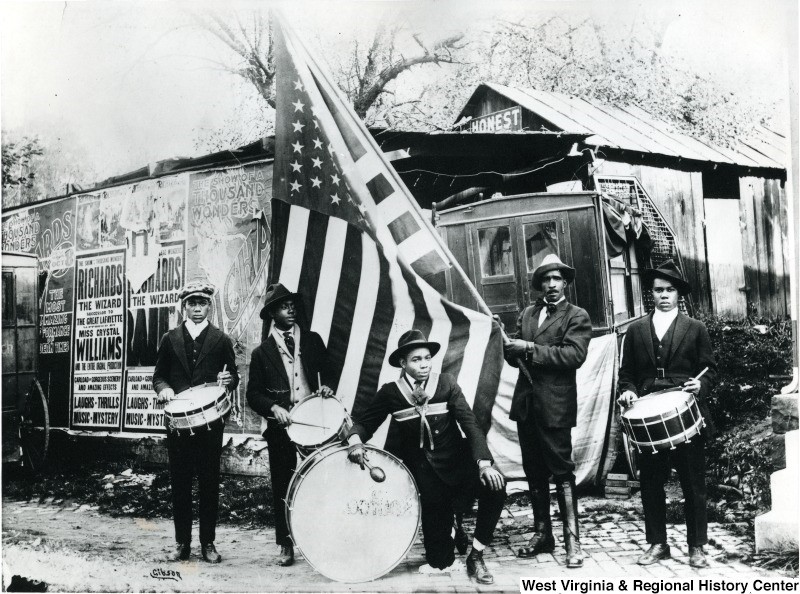
African American Drum Corp, 1915. Read the rest of this entry »
Posted in West Virginia Collection | 2 Comments »
Posted by Jane Metters LaBarbara.
June 26th, 2017
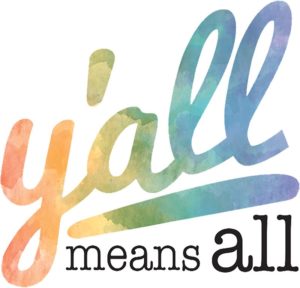
By J. Tyler Chadwell, MAIS
To celebrate LGBTQ+ pride month I wanted to share some incredible reads in LGBTQ+ literature and nonfiction that you can access locally at the West Virginia & Regional History Center at the WVU Downtown Library. LGBTQ+ literature in Appalachia can be viewed as more of a trickle than a flood in quantity. In fact, there are even today a limited number of publications and authors who write about our region and who are openly LGBTQ+ to the public. Progress has been slow to come but acceptance has come much more quickly. This is because regionalism (being from Appalachia or a specific place there) trumps sexual identity in terms of acceptance from a community. For example, the sentiment, “[h]e may be queer, but he’s our queer” which can be found in West Virginia author Jeff’s Man’s newest novel, Country. This is a sentiment I have also found in my fieldwork as a folklorist working in Appalachia. To begin, I’d like to narrow the focus of this post to highlight those works that took place in West Virginia.
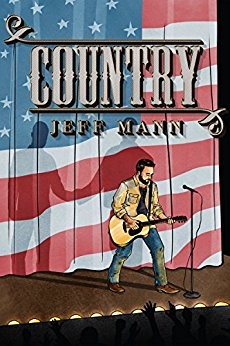 Read the rest of this entry »
Read the rest of this entry »
Posted in West Virginia Collection | No Comments »
Posted by Jane Metters LaBarbara.
June 19th, 2017
Blog post by Lori Hostuttler, Assistant Director, WVRHC.
June 20th is a special day here at the West Virginia & Regional History Center. Every year we honor the anniversary of the creation of our great state through a speaker’s forum, exhibit opening, poster giveaway, and of course – birthday cake! This year is an especially significant celebration as we recognize 150 years of West Virginia University history.
Tomorrow, Tuesday, June 20, beginning at 9:00 a.m., you are invited to enjoy a continental breakfast in the Milano Room in the Downtown Campus Library before the keynote address. Our featured speaker, Dr. Ron Lewis, Professor Emeritus in the WVU Department of History begins his talk at 10:00 a.m. Dr. Lewis is the foremost expert on the history of the University and is the author of Aspiring to Greatness: West Virginia University Since World War II, published by the WVU Press in 2013.

 Read the rest of this entry »
Read the rest of this entry »
Posted in West Virginia Collection | 1 Comment »
Posted by Monte Maxwell.
June 9th, 2017
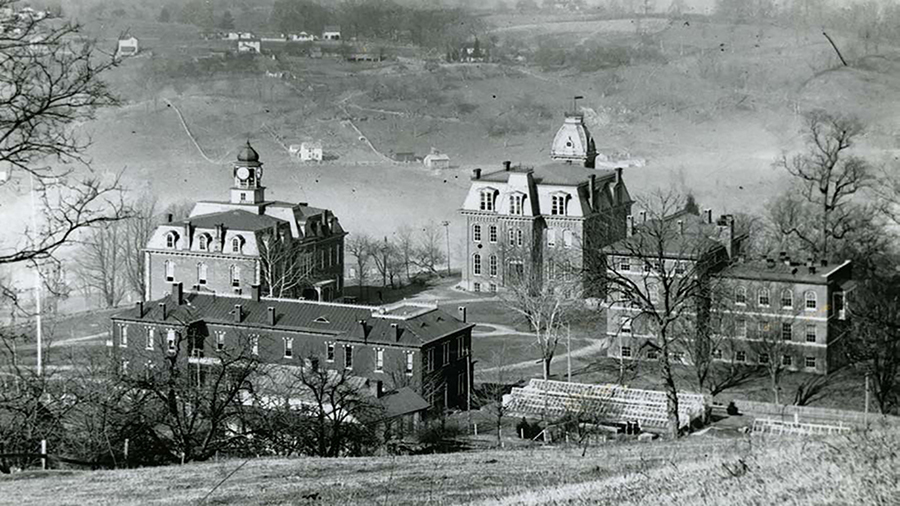
Much has occurred since that first day of class in the fall of 1867 when West Virginia University consisted of just two buildings, six faculty members, six college-level students, and 118 young men preparing to attend college.
WVU Libraries and the West Virginia & Regional History Center will provide a crash course in history to celebrate the University’s sesquicentennial as part of this year’s West Virginia Day program on June 20.
“As we commemorate the 150th anniversary of the founding of West Virginia University, it is essential for us to reflect on the early years of the institution to truly understand our land-grant mission and to appreciate the many significant milestones that have brought us this far,” WVRHC Director John Cuthbert said.
(more)
Posted in Announcements, West Virginia Collection | No Comments »































